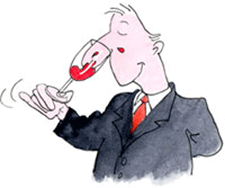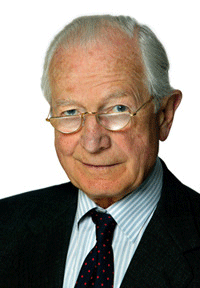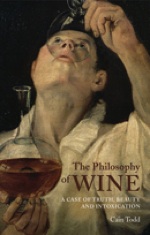G.D. Wendler, barrister and wine correspondent, gets his nose into a book that seeks to distill the language of wine ... Vocabulary and its detachment from objectivity ... The Philosophy of Wine
 The Philosophy of Wine - A Case of Truth, Beauty and Intoxication (Acumen Publishing) by Professor Cain Todd is an engaging disquisition and recent addition to the substantial corpus of wine literature.
The Philosophy of Wine - A Case of Truth, Beauty and Intoxication (Acumen Publishing) by Professor Cain Todd is an engaging disquisition and recent addition to the substantial corpus of wine literature.
Todd is a wine enthusiast and philosopher at the University of Lancaster.
His mission is a philosophical investigation, namely:
"How wine vocabulary emerges, how it is used and, most importantly, whether the words used to characterize wine can be anchored more or less firmly in objective properties of the wine, or perhaps in objective properties of our shared experiences of it. What, if anything, separates the appropriate from the absurd?"
Professional wine critics and serious wine lovers often succumb to hyperbole when describing the physical characteristics of wine. As Professor Todd rightly observes, "the most striking ways in which wines are typically characterized is in their personification".
 Broadbent: ripe vocabularyTwo ridiculous examples come to mind. They belong to the former director of wine at Christies, Michael Broadbent - described by Wine Spectator as "the world's most experienced taster".
Broadbent: ripe vocabularyTwo ridiculous examples come to mind. They belong to the former director of wine at Christies, Michael Broadbent - described by Wine Spectator as "the world's most experienced taster".
In quasi soft porn terms Broadbent once described a 1971 Ch. Vieux Certan (Pomerol) as ...
"Having maturing good legs ... not only good legs but a nubile, willowy body. But I did taste it first in the spring when the sap was rising."
A Lanson champagne vintage 1955 was ...
"calming down and putting on a little weight – a blonde flibbertigibbet becomes a mature young matron."
Wine descriptions such as, sinewy, meaty, jammy, cigar box, acidic, alcoholic, volatile, scented earth, expression of terroir, fat, boiled sweets, citrus, grass-like, vegetal, biscuity, stable yard nose, wet Labrador, duck egg custard, hot bitumen road, sweaty saddle, - there are many more - are employed so that, in a facile way, the wine aficionado is able to communicate commonplace sensations connected to the experience of wine.
According to Professor Todd:
"Tasters talk of a wine's profile, its contours and architecture, design and structure and balance. The lastingness of its shape is described as long or short, its overall size as big or small, its volume as slight, ample, imposing. A wine is formless if its image on the palate is unclear, or it might be rounded, angular, flat. A wine lacking body can be thin, slender, graceful, hollow, skimpy, light, threadbare. Full-bodied wines can be complete, stout, heavy, thick. On the tongue wines that are rich and sweet can be satiny, silky velvety, woolly, slick, flowing. A wines consistency is partly a result of its degree of solidity, a texture perceived by the mouth's tactile sense."
 Prof Todd: evocativeIt is pretentious, irksome, and unprofitable to compare Grange Hermitage to a Norman Cathedral or a vintage Krug Champagne to a Mozart Opera.
Prof Todd: evocativeIt is pretentious, irksome, and unprofitable to compare Grange Hermitage to a Norman Cathedral or a vintage Krug Champagne to a Mozart Opera.
Nevertheless, Todd sees wine as an ...
"expressive vehicle [and] given the complexity of wine and its ability to take on expressive characteristics, partly in virtue of having been designed to do so, there seems to be no good reason for thinking that we could not in principle experience wines as expressing certain emotions and doing so not because of idiosyncratic imaginary associations but in virtue of intrinsic properties of wine in combination with the right kinds of conventions."
To give him natural justice he does ask the question why evocative wine descriptions should not be replaced by incomprehensible chemical terms?
For example, wines made from the Cabernet Sauvignon and Sauvignon Blanc grapes demonstrate herbaceous, grassy, peppery aromas attributable to specific methoxypyrazine compounds.
American oak treatment of Chardonnay grapes creates lactones and ethyl vanilla - present also in the vanilla bean.
Brettanomyces contribute to the gamey aroma found in wine made from Shiraz grapes. Polyphenols, anthocyanins in wine are responsible for the astringency of tannin and colour.
Writing in 6 BC the poet philosopher Theognis of Megara observed, "wine will show the mind of man".
 As far as I am aware there has not been much philosophical analysis of the special language of wine appreciation and that is reason enough to recommend Todd's book to all serious wine devotees. As he says:
As far as I am aware there has not been much philosophical analysis of the special language of wine appreciation and that is reason enough to recommend Todd's book to all serious wine devotees. As he says:
"One needs to drink for oneself; and the better the wine, the better your chances of tasting the truth of these observations. Indeed there is no better way, or pleasurable way, of combining philosophical reflection with empirical study."
On that, we're in agreement.
G.D. Wendler
The Philosophy of Wine - A Case of Truth, Beauty and Intoxication